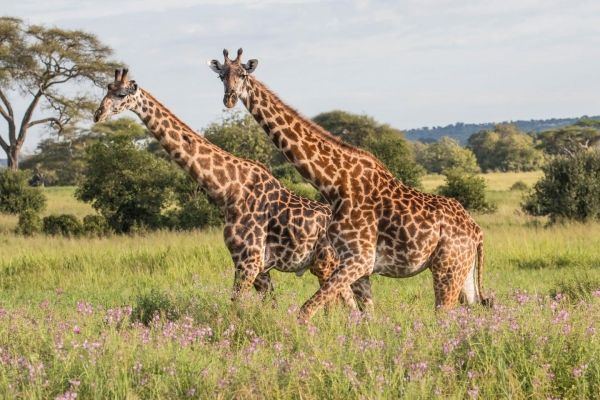Giraffes that live close to densely populated towns have larger home ranges than giraffes that live far from towns, according to a new study by an international team of wildlife researchers from the University of Zürich, Penn State, and the Wild Nature Institute. This suggests that the giraffes in human-impacted areas need to travel longer distances—and expend more energy—to obtain critical resources. The researchers found that average rainfall also impacts giraffe home ranges, which are smaller in areas with more rain. The study was published February 22, 2019 in the journal Animal Behaviour.
“Giraffes are huge browsing animals that live in African savanna ecosystems where they must find everything they need to survive and reproduce in landscapes increasingly impacted by human activities,” said Derek E. Lee, associate research professor of biology at Penn State and principal scientist of the Wild Nature Institute. “People are converting natural savannas to towns and farms, and cutting trees for fuelwood and charcoal industries, all of which potentially degrade giraffe habitat.”
The team quantified home range sizes—the spatial area over which an animal repeatedly travels in search of food, water, shelter and mates—for 71 adult giraffes from data collected over six years in the spatially heterogeneous Tarangire Ecosystem of Tanzania. They examined correlations between individual home range sizes and environmental and anthropogenic—human related—factors, to better understand the mechanisms driving space use of this threatened megaherbivore.
Read more at Penn State
Image: These are giraffes in the Tarangire National Park, Tanzania. New research shows that giraffes that live near densely populated human settlements have larger home ranges, suggesting that they need to travel greater distances to obtain critical resources. (Credit: Gary Bembridge from London, UK [CC BY 2.0 (https://creativecommons.org/licenses/by/2.0)])


